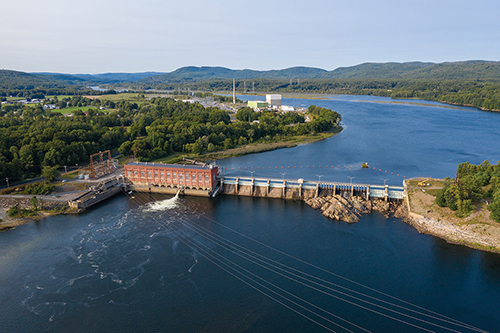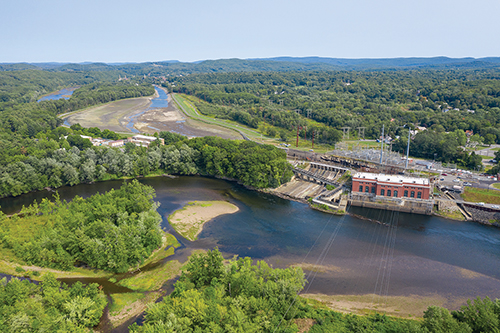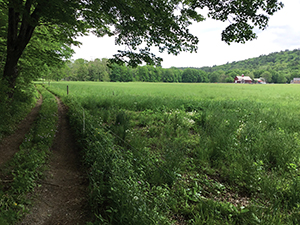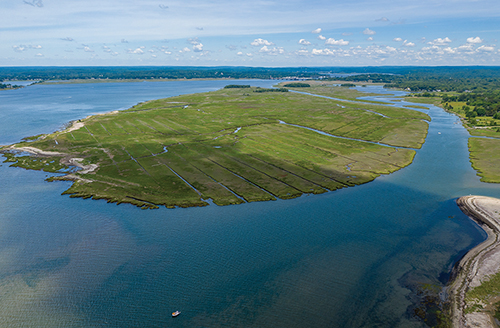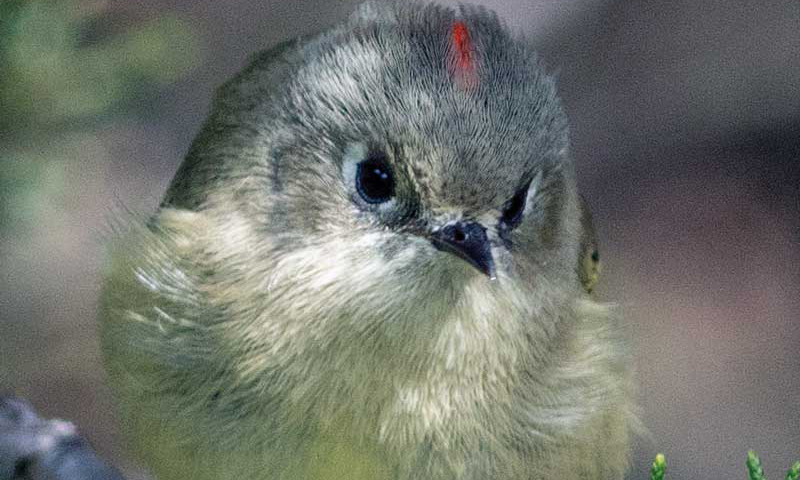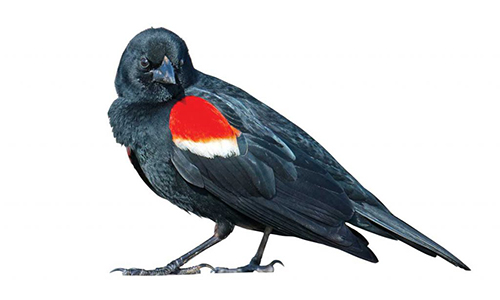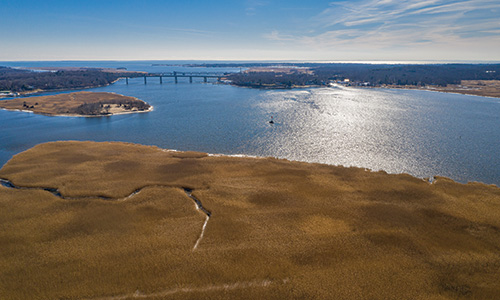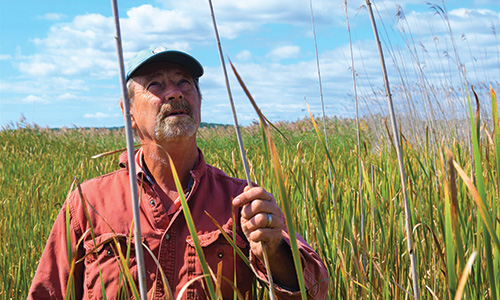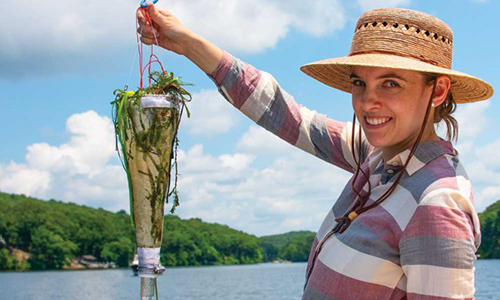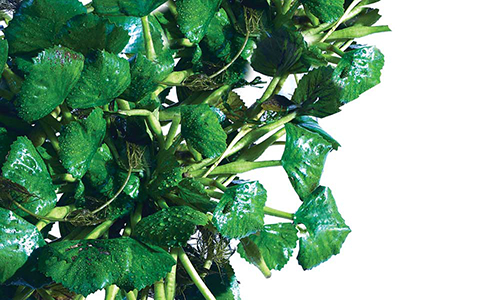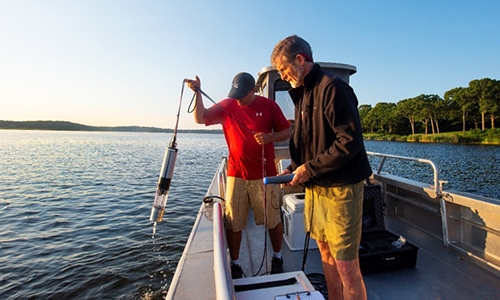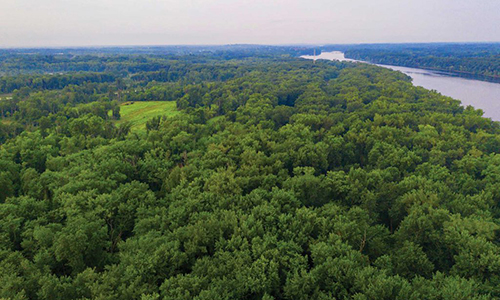Believe it or not, there are more than 3,000 dams on the mighty Connecticut River and its myriad tributaries.
Hydropower
We are publishing two articles about the hydropower industry in this issue of Estuary. The first offers an overview of, or a peek at, the hydropower industry, an important but largely behind-the-scenes stakeholder in the Connecticut River watershed.
From the Publisher:
My wife and I had just spent the night in a tent high up in the Tien Shan Mountains of eastern Kyrgyzstan, just down the road from where the Russian cosmonaut Yuri Gagarin
prepared his physique for space flight.
Land Trusts in the Watershed
Land trusts as a mechanism for preserving land for public use have existed for thousands of years. However, most land trusts in the United States established for conservation purposes were created after World War II, starting in the 1960s and 1970s, and continuing today.
Preserving & Appreciating Estuaries
This magnificent estuarine expanse is both an aesthetic and utilitarian asset. Estuaries sequester about 20 percent of the world’s carbon, cleanse our waters, and provide comfort and sustenance to countless species, including our own. If you haven’t experienced this salty idyll, up close and personal, put it on your “to see” list.
Vermont Center for Ecostudies
SPONSORED CONTENT
Just about a mile as the crow (or cardinal, or chickadee) flies from the Connecticut River’s western bank in Norwich, Vermont, sits a nondescript building that houses one of the most effective wildlife conservation organizations in the Northeast that
you’ve probably never heard of: the Vermont Center for Ecostudies (VCE).
A Rude Awakening and Call to Action
This fall, scientists at the Cornell Lab of Ornithology spearheaded a sobering report, “Decline of the North American Avifauna,” Science, DOI: 10.1126/science.aaw1313 (2019), that forces us to moderate our pride in environmental regulations at home.
Where Have All the Birds Gone?
A recent study by Cornell University found that there are nearly 30 percent fewer birds in North America than there were in 1970
Meeting of the Waters
he tranquility and stunning grandeur of the Connecticut River inspires poets, artists, and musicians. It also attracts picnickers, boaters, and tourists seeking fun and adventure. Like all rivers, however, the Connecticut River is influenced by forces of gravity that move water from source to terminus, or in this case, the half mile of vertical drop from Canada to the River’s mouth at Long Island Sound.
Reclaiming the Marsh
A few miles upstream from where the Connecticut River merges with Long Island Sound is Lord Cove Preserve, a picturesque tidal marsh enjoyed by many outdoor enthusiasts. Kayakers and canoeists call Lord Cove a “corn maze on water,” marveling at its five miles of narrow, looping waterways.
Diatoms
On a hot weekend in July, we headed out on the Connecticut River for a wildlife safari. We weren’t aiming to see osprey, swallows, bald eagles, or turtles, though we saw plenty of those. Instead, we were on the hunt for the River’s smallest inhabitants… its microbial wildlife. The presence of such wildlife can be an indicator of the health of a river.
The Estuary’s Most [un]Wanted Plant is Under Water
The aquatic plant known as Trapa natans has the unfortunate common name of water chestnut, leading people who are first hearing about it to think that it may well be a bonus source of that good appetizer, with a strip of bacon wrapped around it.
It’s All About the River’s Water Quality
A thoughtful interview in a boat with Dr. Andrew Fisk, executive director of the Connecticut River Conservancy.
A Treasured Refuge Becomes Permanently Protected
Alongside the Connecticut River, just a few miles south of Springfield, Massachusetts, is a 371-acre environmental success story, a jewel of a refuge, called the Fannie Stebbins Memorial Wildlife Refuge that will be a safe-haven for wildlife for generations to come.

